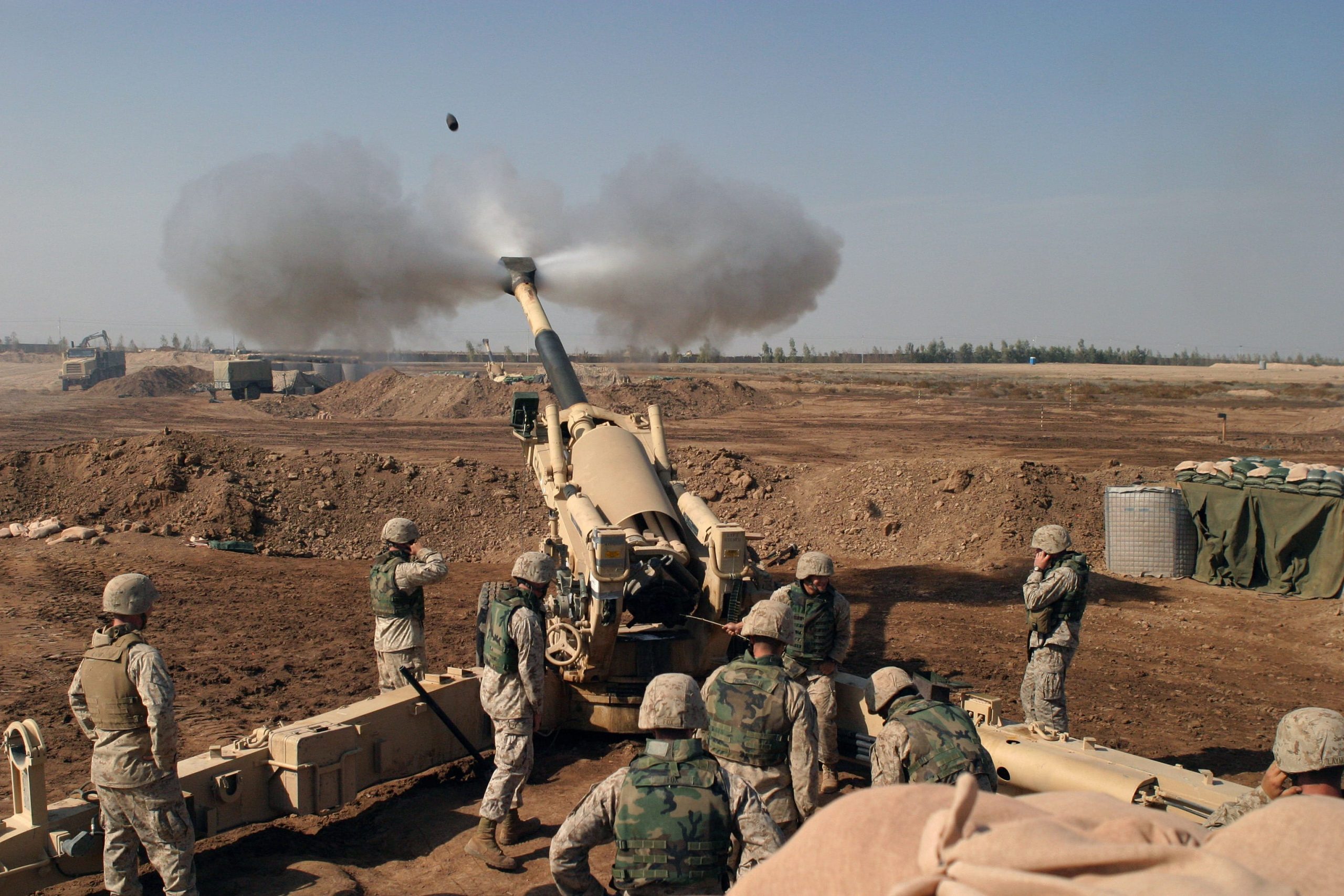
The main weapons imported by Middle Eastern countries, including from traditional European arms manufacturers, over the past 10 years have been widely used in conflicts in the region, including in the Gaza Strip, Lebanon and Yemen, according to a report published earlier this year by a Stockholm-based think-tank. According to the same report, more than 80% of the volume of these arms imports was supplied, alongside the US – which is the leading exporter to the region – by three European Union countries. These are France, Germany and Italy. But there are few exceptions among European countries when it comes to arms exports over the past decade to this ‘hot’ region of the world. While Israel has only ranked 15th in arms imports in recent years, it has ranked 9th in world exports. And among its main buyers are European countries, another facet of the ties between EU countries and the Middle East. Countries that have placed orders for Israel’s arms industry include, for example, Germany, Finland and Slovakia. Israel’s order book for deliveries after 2023 includes dozens of air defence systems, armoured vehicles, artillery weapons and fighter jets. In practice, Germany has purchased in one order, but of particularly high value, armaments from Israel. Finland and Slovakia in turn have also ordered Israeli air defence systems between 2022-2023.
Germany and France, the EU’s main exporters to the Middle East and Near East
According to the Stockholm International Peace Research Institute (SIPRI), three European countries – France, Germany and Italy – supplied, together with the US, 81% of Middle East arms and ammunition imports in 2019-2023. Germany alone supplied 30% of its arms imports to Israel during the period covered by the SIPRI report, second only to the US, from which 69% of these imports came. Germany’s most important customers – still the fifth largest arms supplier in the world after the US, France, Russia and China – are countries in the Near and Middle East. In 2020 alone, the total value of arms exports approved by the federal government in Berlin for countries involved in the conflicts in Yemen and Libya was more than €1 billion. For Egypt alone, the amount was a record of more than €750 million, and another more than €300 million – for Qatar. Lower arms export licences were also approved for the United Arab Emirates, Kuwait, Bahrain and Jordan.
Last year, Germany approved arms export licences worth €323.2 million, 10 times the amount approved in 2022. Most of the deliveries are for the period after the 7th of October Hamas attack on Israel. In total, the value of arms exports to the Middle East and Near East amounted to 1.180 billion, apart from Israel, to which the United Arab Emirates and Saudi Arabia are also destinations.
German defence industry had a good year in 2023
From a financial point of view 2023 was a good year for the German defence industry, and exports of frigates and corvettes to countries such as Israel and Egypt contributed to this.
After the outbreak of the war in Ukraine, France, which has been expanding its arms exports, including taking advantage of restrictions on Russia, “dethroned” Russia from second place in the overall ranking. While Russia’s arms exports fell by 53%, France’s rose by 47%. It is not only sanctions imposed on Russia, but also pressure from the US and some European countries on countries that have traditionally bought Russian arms that have changed the ranking. For example, Egypt, which had intended to buy Russian-made fighter jets, is now turning to France for military aircraft deliveries. France has achieved this by developing its arms industry over the past decades. The French mainly export Rafale jets, as well as submarines and frigates.
Some Gulf states have increased the volume of arms imports to counter Iranian influence, although, as a SIPRI researcher notes, “in 2023, Iran placed by far the largest major arms import order in 20 years, for 24 fighter jets from Russia.” On the other hand, in 2023, the most spectacular increase in arms imports was in Qatar, which in four years increased the volume of imported weapons almost fourfold. In fact, Qatar was, alongside Saudi Arabia, Kuwait and Egypt, one of the West’s main trading partners in the Arab world.
Some countries have banned arms sales to the kingdom as part of an effort to end the civil war in Yemen, in which an Arab coalition led by Saudi Arabia is fighting. Many of these bans, such as those in the United States in 2021, have been temporary. In January 2021, Italy also permanently banned arms sales to the United Arab Emirates because they were part of the Saudi-led coalition in the war. However, Italy recently announced the normalisation of relations with Saudi Arabia and the United Arab Emirates and thus the supply of arms to the two wealthy Gulf states.
After the “Arab Spring”, more than 300 EU arms export licences have been approved for Egypt
According to a report by Amnesty International, in 2014, several EU member states approved a total of almost 300 licences for military equipment destined for Egypt. According to the organisation’s representatives, the total value of these was more than €6 billion. Equipment exported ranged from small arms, light weapons and ammunition to armoured vehicles, military helicopters, heavy weapons for counter-terrorism and military operations and surveillance technology. The report came as Amnesty International complained that “almost three years after the mass killings that prompted the European Union to ask member states to halt arms transfers to Egypt, the human rights situation has worsened”.
Eastern European countries, including EU members, accused of illegally “supplying” weapons to the war in Syria
Two years later, in 2016, an investigation by the Balkan Media Investigative Network (BIRN) and the Organised Crime and Corruption Reporting Project (OCCRP) reported how, as the Syrian conflict escalated in 2012, eight Eastern European countries, including EU member states, approved arms and ammunition exports to Saudi Arabia, Jordan, the United Arab Emirates and Turkey – key arms markets for Syria and Yemen – worth €1.2 billion. According to the investigation, thousands of assault rifles such as AK-47s, mortars, rocket launchers, anti-tank weapons and machine guns were allegedly routed through a new arms pipeline from the Balkans to the Arabian Peninsula and countries bordering Syria to fuel the civil war. The arms export licences were allegedly granted despite expert and government fears that the weapons could reach the Syrian opposition, and no doubt in violation of national, international or EU agreements.

Between 2018 and 2022, the battle for supremacy regarding the arms supply to Africa was between Russia and China, a battle won by Russia which reached a market share of 26%. It is well known that Eastern European countries are producing weapons, artillery shells and other military equipment at an accelerating pace, which has led to a significant increase in Eastern European arms production over the past decade. Poland has the only Eastern European company in the top 100 largest arms producers in the world while the Czech Republic has become the EU’s leading arms supplier to Vietnam. During the Cold War, Eastern European countries were among the most important suppliers to African countries. In 2011, the Czech Republic had arms sales to sub-Saharan countries worth €2 million. Less than a decade later, in 2022, the Czech Republic exported ammunition, weapons, fighter jets and other military products to 20 sub-Saharan countries worth €32 million.
Although the EU has announced that it is investigating, the conclusions of these checks that would have been carried out as a result of the investigation remain unclear. Ammunition is believed to have been sent from Eastern European countries including Bosnia, Bulgaria, Croatia, the Czech Republic, Montenegro, Slovakia, Serbia and Romania.



 Subscribe
Subscribe